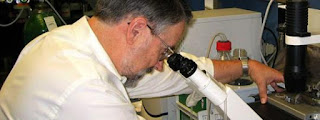Losartan Shown to be Effective in the Treatment of Marfan Syndrome
PROF .DRRAM,HIV /AIDS,HEPATITIS ,SEX DISEASES & WEAKNESS expert,New Delhi,India, profdrram@gmail.com,+917838059592,+919832025033,ON WHATSAPP
Marfan syndrome is a familial (genetic, hereditary) condition affecting connective tissue of the body. Symptoms and characteristics include an arched palate (roof of the mouth), scoliosis, and flat feet. Problems with the eyes,cardiovascular as dilatation of arch of Aorta and nervous system; skin; and lungs.
 People with Marfan syndrome now have expanded therapeutic options for slowing the rate of aortic enlargement, the life-threatening aspect of Marfan syndrome. In the Pediatric Heart Network (PHN) clinical trial of 608 Marfan syndrome patients between the ages of six months and 25 years, losartan (at up to the FDA recommended dose for hypertension) was shown to be equally effective as atenolol (at a dose above the FDA recommended daily dose), with both drugs leading to a significant decline in body size-indexed aortic root dimension over time. This is a new finding for losartan and confirms that adequate dosing of atenolol (titrated to hemodynamic effect) can have a significant impact on the aorta.
People with Marfan syndrome now have expanded therapeutic options for slowing the rate of aortic enlargement, the life-threatening aspect of Marfan syndrome. In the Pediatric Heart Network (PHN) clinical trial of 608 Marfan syndrome patients between the ages of six months and 25 years, losartan (at up to the FDA recommended dose for hypertension) was shown to be equally effective as atenolol (at a dose above the FDA recommended daily dose), with both drugs leading to a significant decline in body size-indexed aortic root dimension over time. This is a new finding for losartan and confirms that adequate dosing of atenolol (titrated to hemodynamic effect) can have a significant impact on the aorta.
Atenolol belongs to a class of drugs called beta-blockers, which are the gold standard for slowing the growth of the aorta in Marfan syndrome, whereas losartan belongs to a class of drugs known as angiotensin receptor blockers or ARBs. Without any medication, nearly all people with Marfan syndrome experience progressive enlargement of the aorta, the large artery that takes blood away from the heart, leading to a tear or rupture, which can be fatal. This study showed that atypically high doses of atenolol were well-tolerated and that conventional dosing of losartan was equally effective ─ both victories for the Marfan community. Further study is required to determine if escalation of losartan dose or combined therapy protocols have the potential to further improve patient outcomes.
Interestingly, the study showed that the magnitude of response to therapy was greater in younger age groups, with the greatest apparent benefit in the youngest children. This could change the management of younger patients as some doctors and parents have been hesitant to start medication in young children with Marfan syndrome.
- Kidney stones universally present hazard in north india,dillution by water prevent it
- Steroid and placebo effect equally for mild persisting asthma with low sputum eosinophils
- Government wants to fix public healthcare staff shortages with ayush docs: will it work?
- Plea in hc for payment of salaries of edmc, north mcd teachers and doctors
- 7 indian pharma companies named in us lawsuit over inflating generic drug prices
- Woman in up dies after explosion in her mouth during treatment,what is diagnosis?
- Woman in up dies after explosion in her mouth during treatment,what is diagnosis?
- Woman in up dies after explosion in her mouth during treatment,what is diagnosis?
- Air pollution ! mothers organising rally in london,anaesthetist choosing gas,will india follow?
- Cardiac arrest is always not sudden as understood -a study

 Comments (
Comments ( Category (
Category ( Views (
Views (